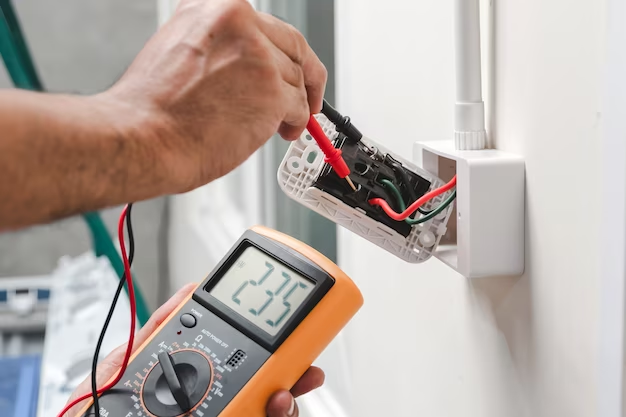Australia is a vast and diverse continent known for its breathtaking landscapes, unique wildlife, and vibrant cities. However, it is also a land of extreme weather events, and power outages can happen unexpectedly. Whether caused by bushfires, severe storms, or infrastructure failures, these outages can disrupt daily life, posing various challenges.
To ensure you are well-prepared for power outages in Australia, it is crucial to understand the risks, plan ahead, and take the necessary precautions. This comprehensive guide will cover everything you need to know about power outage preparedness in Australia.
Understanding the Power Grid in Australia
Australia's power grid is divided into several interconnected networks. These networks serve different regions of the country, including the National Electricity Market (NEM), which covers the eastern and southeastern states, and several smaller grids in Western Australia, the Northern Territory, and some regional areas. While the country's power supply is generally reliable, the vast distances and harsh climate conditions make it susceptible to various disruptions.
Common Causes of Power Outages in Australia
Power outages in Australia can occur due to a range of factors, including:
- Severe Weather Events: Australia experiences cyclones, floods, storms, and bushfires, all of which can damage power infrastructure and disrupt the supply.
- Infrastructure Failures: Aging infrastructure, equipment faults, or human errors can lead to unexpected power failures.
- Heatwaves: Extreme heat can strain power grids as demand for electricity surges, leading to outages.
- Maintenance and Upgrades: Planned power cuts for maintenance and grid upgrades are common and usually communicated in advance.
- Wildlife Interference: Animals, particularly birds and possums, can cause short circuits or equipment damage.
How to Prepare
Power outages can have significant consequences for individuals, communities, and businesses. Loss of electricity can affect essential services, disrupt communication, and even put lives at risk.
Being prepared for power outages is not just a matter of convenience but a necessity. Here's what you need to do:
1. Create an Emergency Kit

Every household should have an emergency kit ready in case of a power outage. This kit should include:
- Flashlights and Batteries: Ensure you have enough flashlights and spare batteries to provide illumination during the outage.
- Candles and Matches: Use candles as an alternative light source, but exercise caution when using open flames.
- Portable Chargers: Keep portable chargers for your mobile devices to stay connected during outages.
- Non-Perishable Food and Water: Stock up on canned food, dry goods, and bottled water to sustain your family for several days.
- Blankets and Warm Clothing: In case the outage occurs during cold weather, having warm clothing and blankets is essential.
- First Aid Kit: Include basic medical supplies in your kit, such as bandages, antiseptic, and any necessary prescription medications.
- Important Documents: Store copies of essential documents like identification, insurance policies, and medical records in a waterproof container.
2. Backup Power Sources

Consider investing in backup power sources to keep essential appliances like refrigerators running during a power outage. Brands like Acenergy provide cost-effective portable power stations that simultaneously charge 99% of home devices.
A portable power station offers invaluable convenience during power outages. Unlike traditional generators, these compact units are easily movable and don't rely on fossil fuels. Their rechargeable batteries provide a clean and quiet energy source, making them suitable for indoor and outdoor use.
Their versatility allows them to power essential devices like phones, laptops, and medical equipment, ensuring you stay connected and safe. Additionally, they can support larger appliances like refrigerators or CPAP machines, providing a sense of normalcy in trying times.
Portable power stations also eliminate the need for extension cords and can be conveniently charged in advance, ensuring they're ready when you need them most. Their multiple output options, including AC, DC, and USB ports, make them compatible with a wide range of electronics.
Furthermore, some models can even be charged using solar panels, offering a sustainable and long-term solution for extended power outages. Overall, the convenience and adaptability of a portable power station significantly enhance one's ability to navigate and cope with unexpected disruptions in power supply.
3. Stay Informed
Stay informed about power outages in your area. You can do this by:
- Registering with Your Utility Provider: Many utility companies offer outage alerts via email or text messages. Sign up for these services to receive real-time updates.
- Monitoring Weather Conditions: Stay informed about weather forecasts and warnings. Severe weather events often precede power outages.
- Community Alerts: Join local community groups or social media channels dedicated to emergency information and updates.
4. Develop a Family Emergency Plan
Create a family emergency plan that outlines how your household will respond to power outages and other emergencies. This plan should include:
- Communication: Establish a communication plan to stay in touch with family members during an outage, especially if they are away from home.
- Meeting Locations: Designate meeting locations in case family members are separated when an outage occurs.
- Evacuation Plan: Determine evacuation routes and destinations if you need to leave your home during an extended outage.
- Special Needs: Consider the needs of family members with disabilities, medical conditions, or special requirements. Especially for people that power is a must-have gadget.
5. Protect Your Appliances

To prevent damage to your appliances and electronics during a power outage, consider using surge protectors and unplugging sensitive devices when not in use. This can help safeguard your equipment against voltage spikes when the power is restored.
6. Prepare for Prolonged Outages
In some cases, power outages can last for an extended period. If you live in an area prone to prolonged outages, take the following steps:
- Stockpile Supplies: Increase your food and water supplies to sustain your family for an extended period.
- Consider a Home Generator: If you can afford it, invest in a standby generator that can provide continuous power during an extended outage.
- Stay Informed: Keep abreast of updates from your utility provider and local authorities regarding restoration efforts. This is very important to get the latest news about the power situation.
Conclusion
Power outages can happen unexpectedly in Australia due to a variety of factors, from extreme weather events to infrastructure failures. To ensure your safety and comfort during these disruptions, it is essential to be well-prepared.
Create an emergency kit, consider backup power sources, stay informed, develop a family emergency plan, protect your appliances, and prepare for prolonged outages.
By taking these steps, you can minimize the impact of power outages on your daily life and ensure the safety and well-being of your family. Remember, preparedness is key when it comes to navigating the challenges of power outages in Australia







